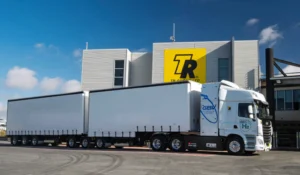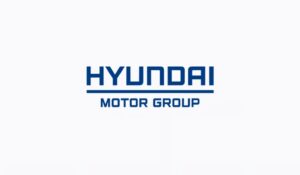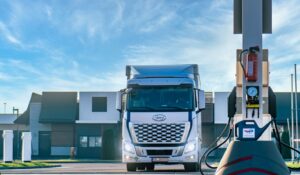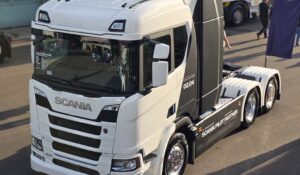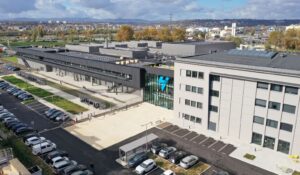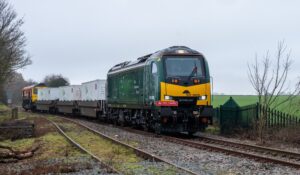Geely’s 200kW hydrogen truck goes into production
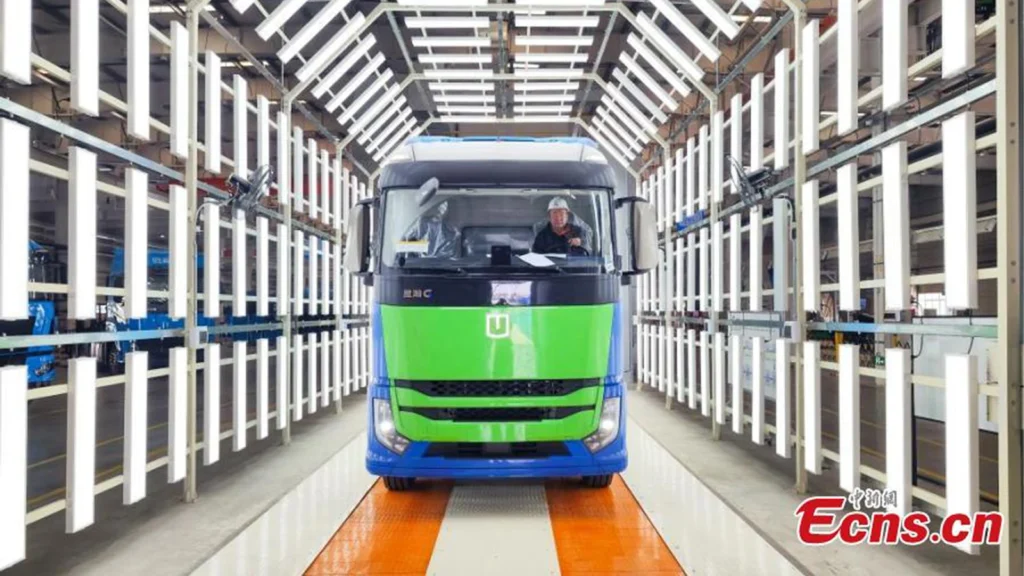
Farizon, the commercial vehicle arm of Geely, has started mass production of its Xinghan G hydrogen fuel cell truck – a 200kW model aimed squarely at long-haul logistics.
According to China Trucks, the first 100 units rolled off the line at Farizon’s Tianjin factory in early March, with deliveries expected later this month.
In total, 600 trucks are planned, built in partnership with Rongcheng New Energy Group.
It’s being described as China’s first mass-produced hydrogen truck in the 200kW class – and while “first” claims can sometimes be a matter of interpretation, there’s no doubt this powertrain is a meaningful ramp-up in scale.
What it claims to deliver
Farizon says the truck carries 62kg of hydrogen and offers a range of more than 700km, powered by a 200kW hydrogen fuel cell driving a 450kW peak electric motor.
Compared to equivalent models – though no direct rivals were named – the company claims 10% lower energy consumption.
On the cost side, Farizon estimates operational savings of more than 100,000 RMB (around £11,000) over five years, based on 100,000km a year.
These are manufacturer figures, of course, but the logic behind them is sound enough.
High-mileage, fixed-route logistics is one of the applications where hydrogen makes commercial sense – and where battery-electric alternatives can still run into trade-offs around range, recharging, and payload.
The truck also makes use of the fuel cell’s waste heat to help maintain range stability and cabin comfort in cold weather.
Ports, provinces and freight corridors
The first trucks are heading to Tianjin and Huanghua Ports, with further deployment planned in Chengde, Changzhi and Baotou.
According to Farizon, the goal is to support green freight corridors across the Beijing-Tianjin-Hebei region, using hydrogen to decarbonise key logistics routes.
It’s a smart starting point, with ports and industrial hubs offering the kind of controlled environment where hydrogen refuelling infrastructure can be built and used efficiently.
Trucks that are running repeatable, high-utilisation routes, are a much easier infrastructure sell than trying to support a dispersed, low-utilisation fleet across unpredictable routes.
Flexible platform, predictable choices
Under the skin, the Xinghan G rides on Farizon’s GXA-T platform – a modular setup that supports hydrogen fuel cell, pure electric and methanol-hydrogen powertrain configurations.
That flexibility is likely as much about hedging bets as it is about meeting diverse operational needs. Commit to the truck now, see what sells, and scale up the best powertrains later.
On safety, Farizon highlights a 360° camera system to reduce blind spots, real-time hydrogen concentration monitoring, and an automatic shut-off mechanism.
The truck’s hydrogen tanks are fourth-generation Type IV composites, which the company says have been through over 45,000 fatigue cycles and meet or exceed Chinese safety standards.
It’s a solid, work-ready spec list – not especially flashy, but that’s sort of the point.
Trucks being built
Farizon frames the Xinghan G as part of its dual-technology strategy, which covers both battery-electric and methanol-hydrogen powertrains.
The aim, according to the company, is to deliver integrated transport solutions that reduce emissions without compromising usability or total cost of ownership.

